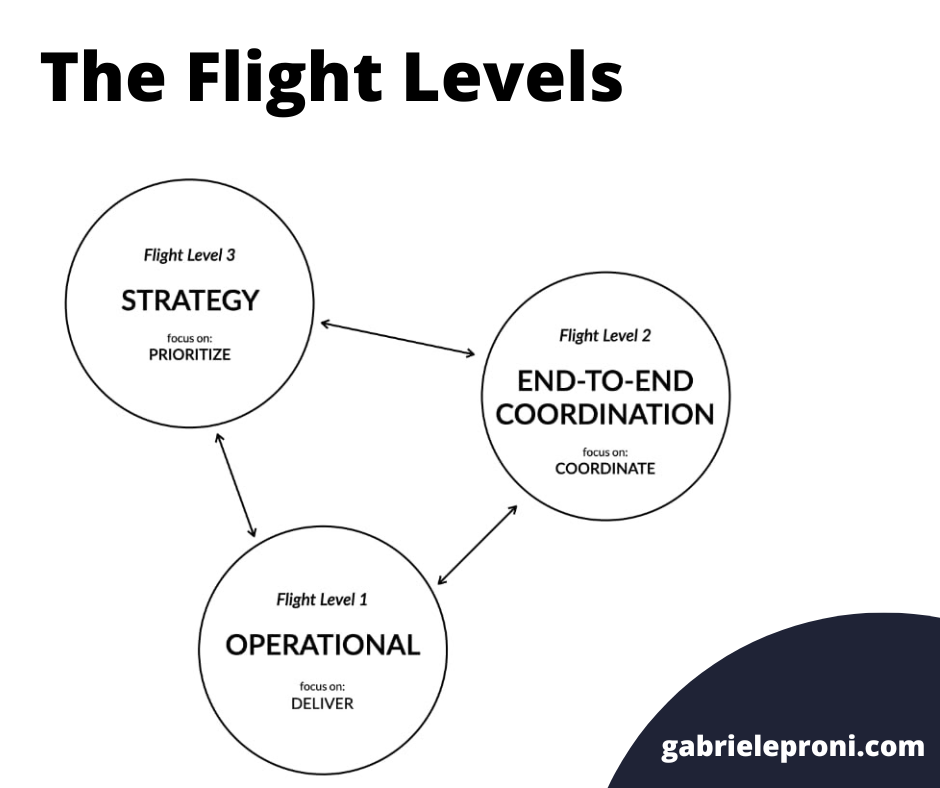Kanban, Scrum, Waterfall, whatever.. is it enough?
Take a look at your boards and try to answer this question on your tasks:
Why?
If you can give a proper answer, there is a second one ready for you:
Can all your teammates explain why as well?
Don’t be scared if you are not able to pass this test..
As remote leaders, it’s pretty common to focus on the proper working framework, the right tools, the fitting process…
… and forget about sharing the company strategy.
This Saturday, I will talk about a concept to solve this issue:
Flight Levels.
The Flight Levels
Flight Levels is a concept introduced to me by Klaus Leopold (the creator) and Kiril Klimov (organizational consultant).
The goal is to see company goals and activities from different “altitudes”.

The idea comes from how you can see the earth while flying, depending on the altitude:
- FL1: Operational
- FL2: Coordination
- FL3: Strategy.
Flight Level 1: Operational
We are at the lowest observation altitude.
We can observe details of a team’s daily life.
However, we have a minimal view of how tasks impact the company’s business goals.
Flight Level 2: Coordination
We are at a mid-observation attitude.
We can focus on how teammates collaborate, so each team works on the right things at the right time.
The bigger the team, the more this layer needs attention.
Flight Level 3: Strategy
We are at the highest observation attitude.
FL3 is the strategic heart of the organization.
A real example
FL3 -> decision to prioritize a new project
FL1 -> list of needed activities to deliver the new project
FL2 -> orchestrate the teams that will perform the actions to deliver the new project
FL 1 and 2 cover concepts also covered by Kanban, Scrum, and similar frameworks.
The real difference here is the combination with Flight Level 3.
At Flight level 3, you have the power to define the company’s strategy.
Strategy comes from the Vision and the Mission.
At Flight level 3, you determine the few elements that should answer the question “Why?” for ALL company’s tasks. No matter the size of your team.
Start by checking if you (and your colleagues) can explain why you are working on a particular topic or project.
It’s like playing at the Why game with a kid
The more you answer why the more you’ll clean the “noise” in your backlog.
The more you answer why the more you increase the company’s mission and vision awareness across teammates.
About the Newsletter
1 actionable tip on remote management in your inbox every Saturday morning.
Subscribe